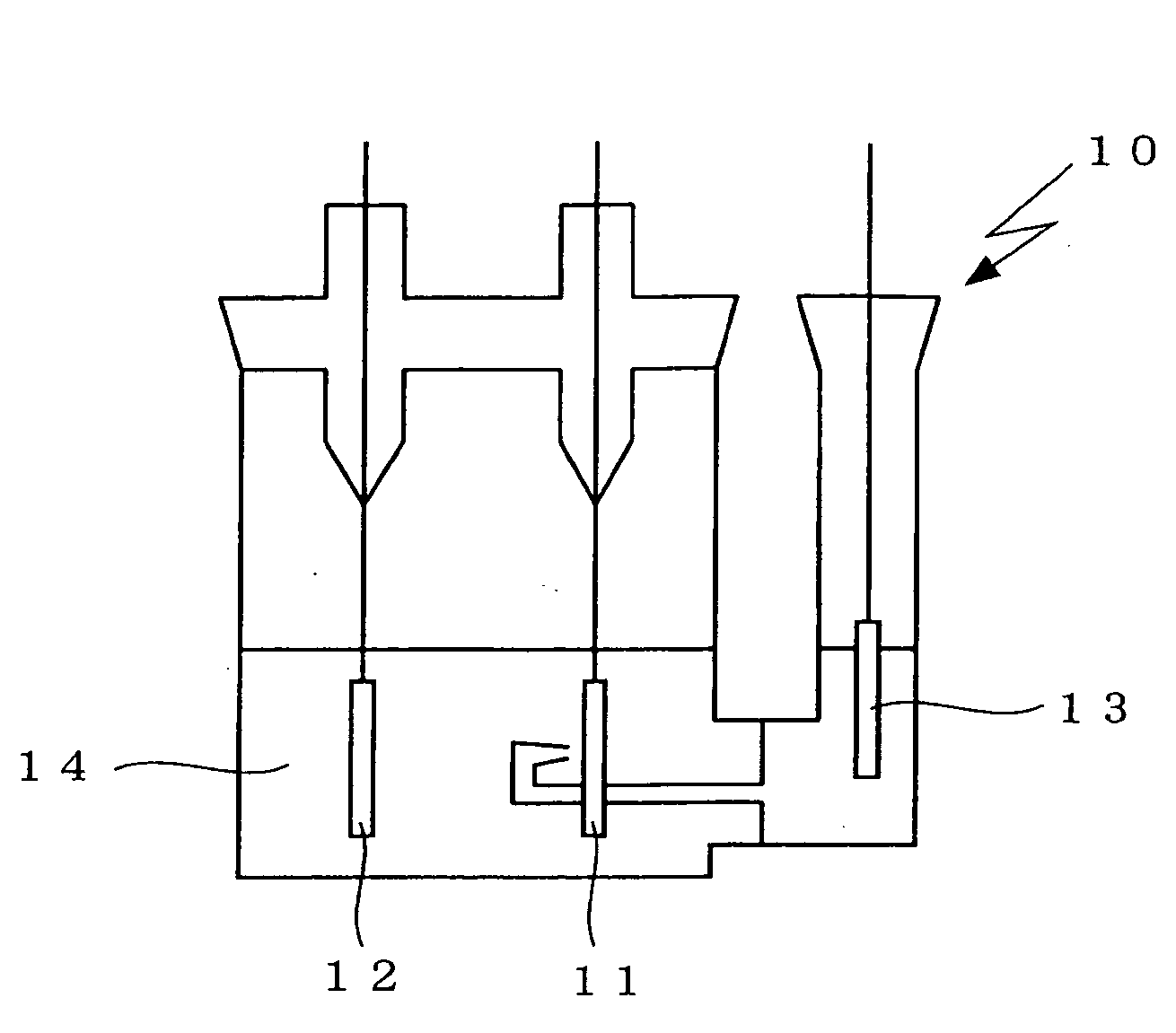Non-aqueous electrolyte secondary battery
a secondary battery and non-aqueous electrolyte technology, applied in the direction of non-aqueous electrolyte accumulator electrodes, cell components, electrical equipment, etc., can solve the problems of high manufacturing cost, unstable supply, and type of non-aqueous electrolyte secondary batteries, and achieve high rate capability
- Summary
- Abstract
- Description
- Claims
- Application Information
AI Technical Summary
Benefits of technology
Problems solved by technology
Method used
Image
Examples
example 1
[0038]In Example 1, a positive electrode was prepared using Li1.22Ni0.17Mn0.61O2 as the lithium-containing metal oxide represented by the foregoing general formula, which was obtained by mixing Li2CO3 and a hydroxide of Ni0.17Mn0.61 together and then sintering the mixture in air.
[0039]Li0.1FePO4 belonging to the space group Pnma, which was obtained by delithiation from LiFePO4, was used as the LibFePO4.
[0040]The just-described Li1.22Ni0.17Mn0.61O2 and Li0.1FePO4 were mixed together at a weight ratio of 85:15, and the resultant mixture was used as the positive electrode active material. The positive electrode active material, a carbon material as a conductive agent, and polyvinylidene fluoride as a binder agent were dissolved in a N-methyl-2-pyrrolidone solution so that the positive electrode active material, the conductive agent, and the binder agent were in a weight ratio of 90:5:5, and the resultant was kneaded to prepare a positive electrode mixture slurry. Then, the positive ele...
example 2
[0042]In Example 2, a positive electrode was prepared in the same manner described as in Example 1 above, except that the positive electrode active material used was a mixture of the Li1.22Ni0.17Mn0.61O2 and the Li0.1FePO4 in a weight ratio of 70:30. Using the prepared positive electrode, a three-electrode test cell was prepared in the same manner as described in Example 1 above.
PUM
| Property | Measurement | Unit |
|---|---|---|
| mole ratio | aaaaa | aaaaa |
| mole ratio | aaaaa | aaaaa |
| mole ratio | aaaaa | aaaaa |
Abstract
Description
Claims
Application Information
 Login to View More
Login to View More - R&D
- Intellectual Property
- Life Sciences
- Materials
- Tech Scout
- Unparalleled Data Quality
- Higher Quality Content
- 60% Fewer Hallucinations
Browse by: Latest US Patents, China's latest patents, Technical Efficacy Thesaurus, Application Domain, Technology Topic, Popular Technical Reports.
© 2025 PatSnap. All rights reserved.Legal|Privacy policy|Modern Slavery Act Transparency Statement|Sitemap|About US| Contact US: help@patsnap.com


